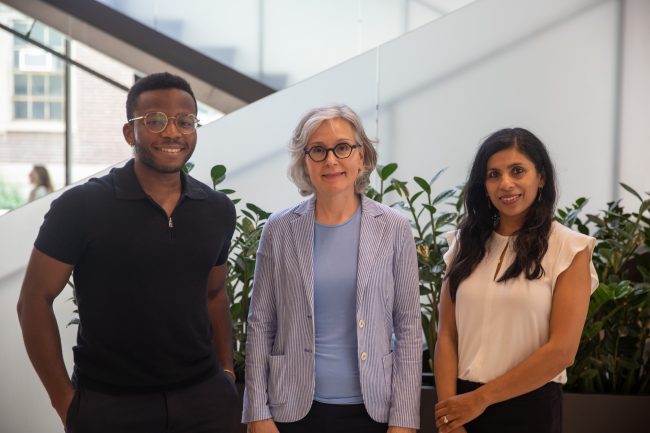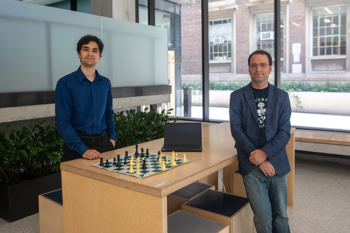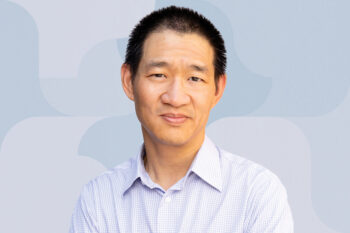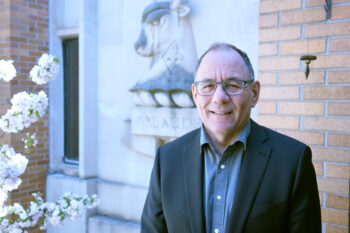New innovations in the ways that human cells are grown in laboratories could help speed up the development of cellular therapy, a branch of regenerative medicine that targets diseases that are incurable today.
According to Professor Julie Audet (BME), some of the most significant challenges to achieving this goal have to do with how the therapeutic cells are produced.
Her research in cell and tissue engineering aims to enhance the therapeutic properties of lab-grown human cells to ensure that they are ready for clinical application.
Audet and her team are developing complex computational algorithms to optimize laboratory experiments for academic and industrial researchers. These tools will allow researchers to create the best conditions to culture therapeutic cells.
Cellular therapy acts by transplanting enhanced human cells into the body to replace or repair damaged tissue and cells, to treat a variety of diseases and conditions — an approach sometimes referred to as a living drug.
“But before cells can be transplanted into a patient, we want to ensure that the cells are not contaminated with compounds that can trigger an adverse reaction,” says Audet.
“We also need to enhance the therapeutic properties of the cells in a culture process to effect a positive medical outcome.”
There are many factors to consider when designing cell culture experiments. For example, there are numerous expensive reagents to select and optimize at different doses — these substances are used to test chemical reactions carried out by the cell. There are also significant technical and biological variations to consider: cells from different donors don’t always behave the same in culture.
“Our algorithms become necessary when experiments are very costly to execute and are extremely labour intensive,” says Audet.
“They are especially useful when the results are impossible to predict because of the complexity of the biological systems under study. In that case, it would not be feasible or possible for researchers to use conventional approaches to design and execute their experiments.”
With complex computational algorithms based on machine learning, Audet and her team can design experiments that are not only feasible and offer a greater chance of success, but are also less costly, with fewer resources needed to execute the experiment.
An earlier prototype of such algorithms was used by Audet’s lab to make a serum-free T-cell medium to treat blood disorders. The algorithm was also used by Professor Craig Simmons (MIE, BME) and Neal Callaghan (BME PhD 2T1), a former student in the Simmons Lab, to develop a culture media for cardiomyocytes — cardiac muscle cells — which is now being commercialized.
“Cardiac tissue engineering is an important application for our tools because when it comes to heart failure and heart disease, there are many conditions that can’t currently be cured,” says Audet.
“Cellular therapy offers a promising approach to treat heart failure and other cardiac ailments.”
Audet is currently working with Professor Sowmya Viswanathan (BME, Temerty Medicine) on research that addresses the distinct characteristics between cell donors that make cells behave differently in culture.
Viswanathan is developing cellular therapies using naïve and enhanced mesenchymal stromal cells to combat osteoarthritis, a chronic inflammatory disease.
“We have seen that different mesenchymal stromal cell donors prefer different growth conditions,” Viswanathan says. “This algorithm helps us identify optimal conditions for different donors without doing a full set of detailed experiments.”
The goal of her collaboration with Audet is to also develop categories of conditions that could be matched to diverse groups of donors based on genetic markers.
Audet and Viswanathan co-supervise Oreoluwa Kolade (BME PhD candidate), whose work intersects tissue engineering and data science. He was also awarded a three-year doctoral student fellowship at U of T’s Data Sciences Institute in 2022.
“My research involves the statistical design of experiments, looking at the numerous factors that can impact the cell expansion process, such as oxygen levels, cell density and medium composition,” says Kolade.
“If a researcher wants to see which factors maximize the therapeutic quality of their cells, it isn’t cost effective to test all possible combinations. So, we are trying to design experiments in such a way that researchers can get the highest impact when they see their results.”
This model would allow researchers to narrow down the varying factors and run combinations into a simulation model to see which experiments they would need to do to get the best cells.
“We are currently working on the commercialization of the latest version of one of the algorithms that includes these machine learning modules to help design experiments,” says Audet.
“We hope this tool will help make cellular therapies both widely available and more accessible by accelerating the development of these therapies while increasing the effectiveness of the enhanced cells.”



